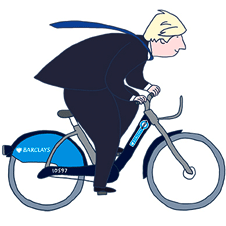This topic contains 8 replies, has 9 voices, and was last updated by briant 6 years ago.
-
AuthorPosts
-
August 22, 2010 at 9:50 pm #73969
It’s been widely reported that the cost of the cycle scheme is £140 million and I’ve been digging around trying to understand exactly what this means. I think it’s supposed to be the value of the six-year contract signed with Serco to run the scheme. But does anyone understand if this factors in the revenues and Barclays’ sponsorship?
This number does seem very high – with 5,000 bikes currently on the road, that works out at £28,000 per bike. Our scheme is essentially a clone of the Bixi scheme in Montreal, which was set up from scratch with a £20 million loan, and currently has 5,000 bikes and is already turning a profit. Dublin’s is a smaller scheme so comparisons may not be fair, but that’s competely financed by advertising.
I’d love to know more about how the Serco and Barclay deals were negotiated, but a particular concern is that if Serco have got their money upfront, there is no incentive for them to adminster the scheme in the interests of the users – i.e. to put capacity where it is needed and to deal with the full and empty bike racks.
August 23, 2010 at 9:10 am #77336£140m does seem very high but if it is for 6 years then it will include 6x annual salaries of a lot of people, planning and maintenance costs, insurance and, lastly, the costs of 5,000 bikes for folk to ride.
Plus of course they had to buy all those tins of paint in Barclays blue just to annoy people.
August 23, 2010 at 1:24 pm #77337A break-down should be available via FoI, but a number like that will typically include all the set-up and operation costs for both TfL and the contractor (Serco in this case) for the full-term. Remember, Serco are the contractor, but TfL do the comms, advertising, planning permissions etc etc.
Serco certainly won’t have been paid all their fee up-front and contracts of this type typically have very detailed performance metrics, ‘service credits’ (for under performance) and occasionally even (for more enlightened contracting authorities) incentives for good performance. That’s one of the reasons I get quite irritated when I see organisations like TfL (or the media quoting them) blaming their suppliers for poor public services. The actual source of the problem *may* be with the private supplier, but TfL (or any government department) should have a contract in place to ensure it gets corrected. *They* are the ones signing the cheques…
August 23, 2010 at 1:35 pm #77338According to this article the £25m from Barclays is not being used to subsidise the £140m, but rather as funds for expansion.
August 23, 2010 at 1:48 pm #77339The London infrastructure is a lot more heavy duty when compared to Bixi in Montreal. In Canada the docking stations are attached the movable pads (meaning docking stations can be moved overnight to a new location). Here they are plumbed into the ground with huge quantities of steel and concrete. I imagine this task alone was quite a cost for 400 docking stations!
August 23, 2010 at 2:44 pm #77340I wonder how many NIMBY types they had in Canada. A lot fewer, I’d guess. All the council and court BS takes time and money.
September 3, 2010 at 4:23 pm #77341I believe the setup cost was about £70m and the running costs are £10-12m per year.
Some of the running cost will be for replacing broken bikes, but it does feel excessive. And I am not sure how they spent £10,000 per docking point on the setup, no matter how much concrete is involved.
I originally thought they might have had to buy the land for the docking stations from the local authorities (or the Highways Agency) which would have accounted for a lot of the cost – but an architect friend tells me that’s unlikely to have been the case.
I am sure there will be an FOI request somewhere – you could try making one at http://www.whatdotheyknow.com (I can’t find any existing requests there which have a breakdown, though there are a few that relate to the scheme).
July 6, 2011 at 1:31 pm #77342I was wondering the other day how the scheme compares in terms of cost compared to other methods of public transport on a cost per head basis (including subsidisation from the govenment – not just the cost to the end user)
According to TFL cost per passenger km is
Bus 23p
Tube 28p
DLR 25p
Tram 22p
Overground 23p
avg 26p
National rail not included.
from :http://www.tfl.gov.uk/assets/downloads/corporate/travel-in-london-report-3.pdf
(pdf page 127, footer page number 119)
Any one know the actual number of miles travelled in the first year in order to do a back of an envelope calucation based on the £10-12 million yearly running costs mentioned above?
the 6 month figure was 10 million km, so £10 million/20 million km = 50p + health benefits, reduction in pollution, etc – I wonder if the TFL figure of a 3 to 1 return on cycling investment holds true for the scheme?
July 31, 2012 at 6:42 am #77344Any nike free run more than drain car seats from locations around Newcastle rumbled about, by using Olympic organisers within stress to complete nike air max 2011 in addition to placate any criminal court furious from witnessing TELEVISION SET photos connected with unused locations, possessing been advised months in the past which onike air max 2012 experienced distributed out.
-
AuthorPosts
You must be logged in to reply to this topic.

